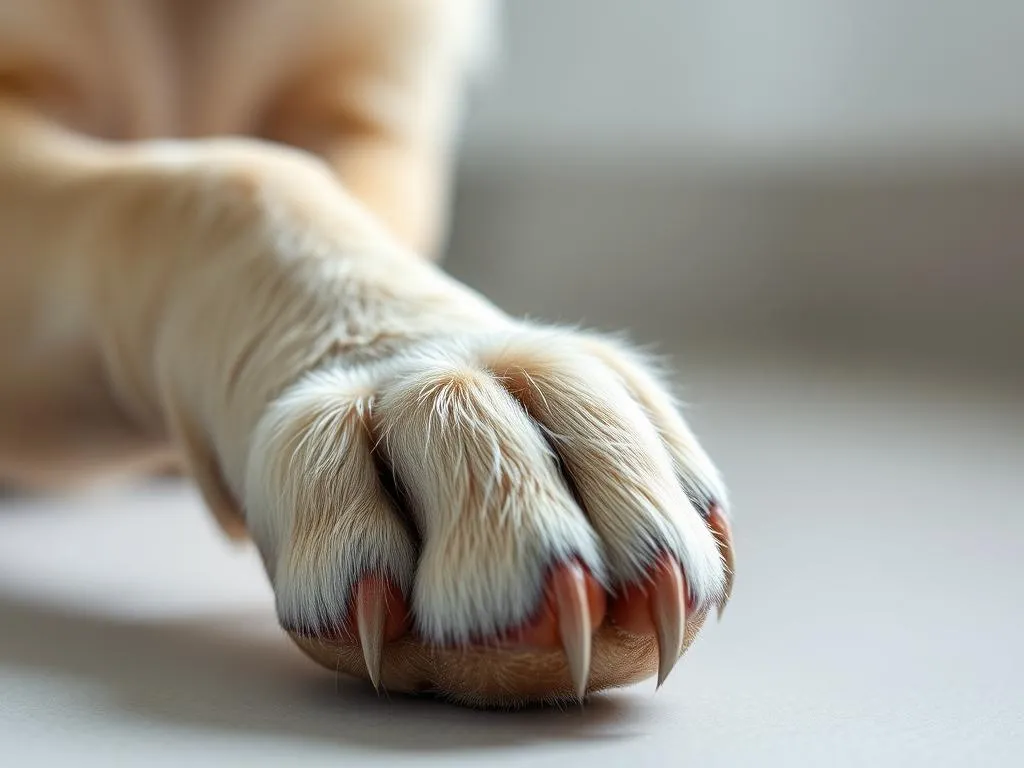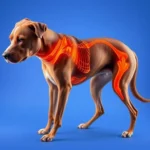
Maintaining your dog’s paw health is crucial, as their paws endure a lot of wear and tear. One common concern among pet owners is the appearance of growths on dog paw pads. These growths can be alarming, prompting many to seek immediate veterinary advice. Understanding the nature of these growths, their potential causes, and when to seek help is essential for every dog owner.
Understanding Growths on Dog Paw Pads
What are Growths?
In veterinary terms, growths refer to abnormal tissue formations that can occur on various parts of a dog’s body, including their paw pads. These growths can be benign (non-cancerous) or malignant (cancerous) and vary in appearance, size, and texture. Common types of growths seen on dog paw pads include warts, tumors, cysts, and various other formations.
Causes of Growths on Dog Paw Pads
Several factors can contribute to the development of growths on dog paw pads:
- Genetic Factors: Some breeds are predisposed to certain types of growths due to hereditary traits.
- Environmental Influences: Factors such as exposure to irritants or allergens in the environment can lead to skin changes.
- Possible Infections: Bacterial, fungal, or viral infections can manifest as growths on the paw pads.
- Allergies and Irritants: Allergic reactions to substances in the environment, such as grass, chemicals, or food, may result in growths.
- Trauma and Injury: Past injuries to the paw pad can lead to scar tissue formation or the development of growths.
Common Types of Growths on Dog Paw Pads
Paw Pad Warts
Paw pad warts are benign growths that often appear as small, raised bumps. They are caused by a viral infection (specifically, the papillomavirus) and are more commonly seen in younger dogs. While they are generally harmless, they can become irritated or infected if not monitored. Treatment options may include surgical removal if the wart causes discomfort or does not resolve on its own.
Tumors (Benign and Malignant)
Tumors can be either benign or malignant, and differentiating between the two is crucial. Benign tumors, such as lipomas, are typically soft and movable. Malignant tumors, like mast cell tumors, can be more aggressive and may require immediate attention. Signs of tumors include persistent lumps, changes in size or color, and signs of discomfort. A veterinary examination is essential to determine the nature of the tumor and the appropriate treatment.
Cysts
Cysts are fluid-filled sacs that can develop on the paw pads due to blocked hair follicles or glands. They can vary in size and may or may not cause discomfort. Common symptoms include swelling and tenderness in the affected area. Treatment often involves draining the cyst or surgical removal if it becomes problematic.
Other Potential Growths
- Calluses and Corns: These are thickened areas of skin that can develop due to friction or pressure, commonly seen in active dogs.
- Foreign Bodies: Objects like foxtails can embed in the paw pad, leading to inflammation and growth-like symptoms.
- Abscesses: Infections can lead to the formation of pus-filled pockets, which may appear as growths. Signs of an abscess include swelling, heat, and discharge.
Symptoms to Watch For
Physical Signs
Being observant of physical changes in your dog’s paws can help in early detection of any issues. Watch for:
- Swelling, Redness, or Discharge: Any noticeable inflammation or drainage from the paw pad should be evaluated.
- Changes in Walking or Limping: If your dog starts to favor one paw or limps, it may indicate discomfort associated with a growth.
- Licking or Chewing at the Paw: Excessive grooming of the paw can be a sign of irritation or pain.
Behavioral Signs
Changes in behavior can also signal underlying issues. Look for:
- Changes in Activity Levels: A sudden decrease in playfulness or energy may indicate discomfort.
- Signs of Pain or Discomfort: Whining, yelping, or reluctance to engage in normal activities can be indicative of pain.
- Reluctance to Engage in Normal Activities: Hesitance to walk or play can be a red flag that warrants further investigation.
Diagnosis Process
Veterinary Examination
If you notice any concerning signs, a visit to the veterinarian is essential. During the examination, the vet will assess the growth and may conduct several diagnostic tests, including:
- Biopsies: A small sample of the growth may be taken for laboratory analysis to determine its nature.
- Imaging: X-rays or ultrasounds may be necessary to evaluate the extent of the growth and its impact on surrounding tissues.
Importance of Early Diagnosis
Early diagnosis is key to successful treatment. Timely intervention can prevent the growth from worsening, reduce discomfort for your pet, and increase the likelihood of a favorable outcome. Delaying treatment may lead to complications or more extensive procedures down the line.
Treatment Options
Home Remedies
While some minor growths may resolve on their own, it’s essential to approach home remedies with caution. If you decide to try at-home care, consider:
- Soothing Baths: Regularly bathing the affected paw in warm, soapy water can help keep the area clean.
- Antiseptic Solutions: Applying pet-safe antiseptics may help prevent infection.
However, always consult your veterinarian before starting any home treatment, as certain growths may require professional intervention.
Veterinary Treatments
Veterinary intervention may be necessary for more severe cases or if home remedies are ineffective. Treatment options include:
- Surgical Options: If the growth is causing pain or discomfort, surgical removal may be the best course of action.
- Medications: If an infection is present, antibiotics or anti-inflammatories may be prescribed.
- Ongoing Care and Monitoring: Post-treatment care is vital to ensure proper healing and to monitor for any signs of recurrence.
Prevention Strategies
Taking proactive measures can help minimize the risk of growths on your dog’s paw pads:
- Regular Paw Inspections: Regularly check your dog’s paws for any signs of growth or abnormalities.
- Grooming Practices: Keeping the fur around the paws trimmed can help prevent irritations and infections.
- Environmental Care: Be mindful of your dog’s environment, avoiding irritants such as rough terrain or harmful chemicals.
When to Seek Veterinary Advice
Signs Indicating Urgent Care
Certain symptoms should prompt an immediate veterinary visit, including:
- Severe Swelling or Bleeding: Significant changes in size or any bleeding from the paw pad should be addressed immediately.
- Signs of Infection: Look for fever, lethargy, or discharge, which may indicate an underlying infection.
- Sudden Changes in Behavior: A drastic change in behavior, especially related to movement or activity levels, warrants concern.
Regular Check-Ups
Routine veterinary visits play a crucial role in maintaining your dog’s overall health. It’s recommended to check your dog’s paws regularly and to schedule veterinary appointments at least once a year. Early detection of any issues can lead to more effective treatment.
FAQs About Growths on Dog Paw Pads
Can growths on dog paw pads be cancerous?
Yes, some growths can be cancerous, which is why it’s important to have any new or changing growths evaluated by a veterinarian.
How can I differentiate between benign and malignant growths?
While it may be challenging to differentiate between the two without veterinary assistance, benign growths are typically softer and less aggressive. Malignant growths may change in size or color and can be associated with pain.
What home care can I provide while waiting for veterinary help?
You can gently clean the area with a pet-safe antiseptic and avoid allowing your dog to lick or chew at the growth. Keep the paw clean and dry until you can see the vet.
Are certain breeds more prone to growths on their paw pads?
Yes, some breeds have a genetic predisposition to developing certain types of growths. For example, breeds like Boxers and Golden Retrievers may be more likely to develop skin tumors.
What is the recovery process like post-surgery?
Recovery varies depending on the type of surgery performed, but generally involves keeping the area clean, observing for signs of infection, and following your veterinarian’s post-operative care instructions.
Conclusion
Monitoring your dog’s paw health is an essential part of responsible pet ownership. Understanding the various types of growths on dog paw pads, their potential causes, and treatment options can empower you to take proactive steps for your pet’s well-being. If you notice any concerning signs or changes, don’t hesitate to consult your veterinarian. Early detection and intervention can make a significant difference in your dog’s health and comfort.









